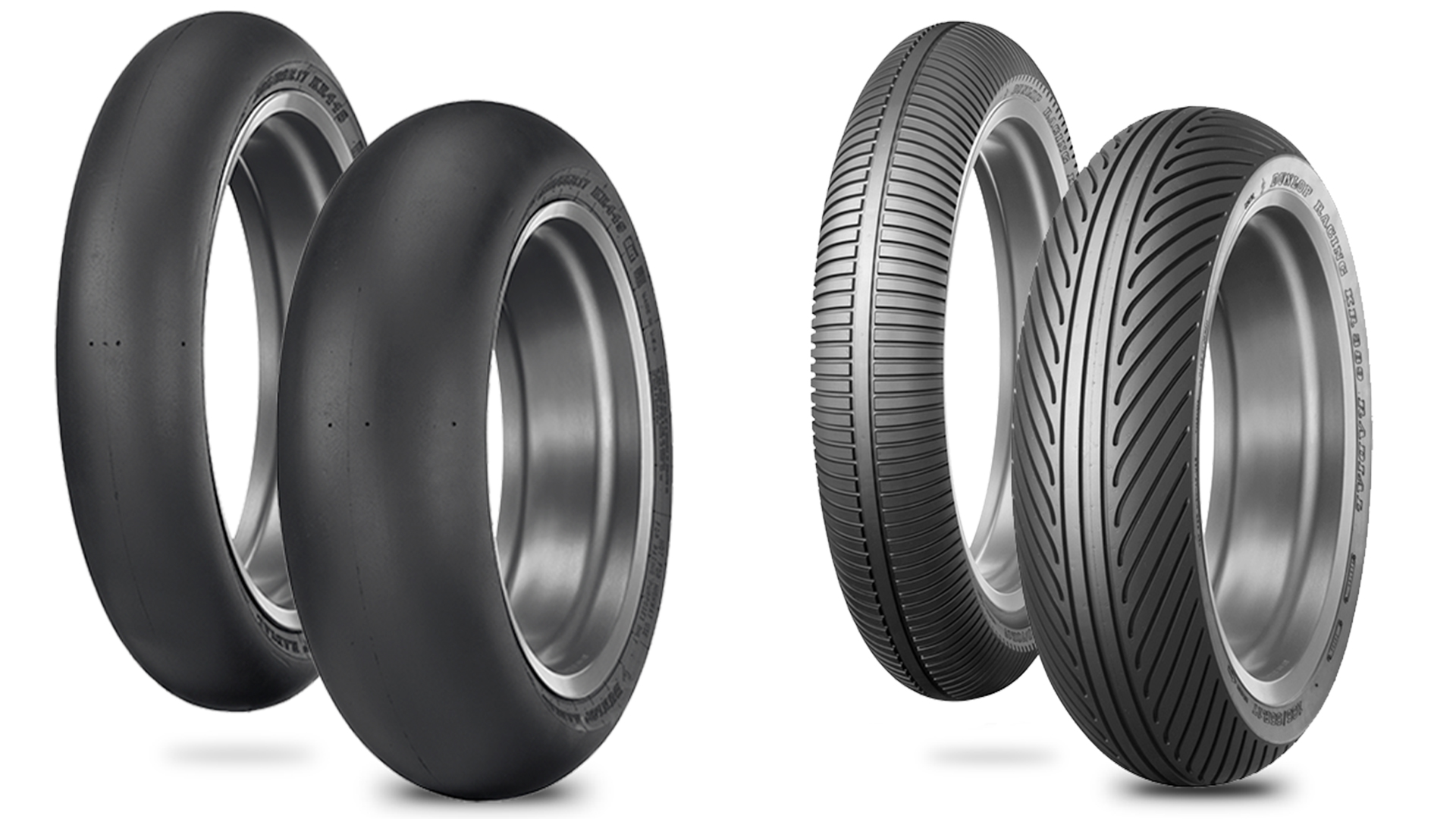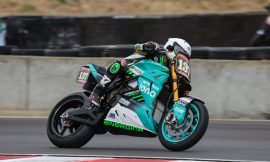
In motorcycle road racing, riders often have to deal with a lot of different weather situations, and in turn, a lot of variations in the condition of the track surface. This was definitely the case last week at the MotoAmerica Official Dunlop Preseason Test. Changeable skies created three distinctly different track conditions: fully dry, fully wet, and damp/drying.

So, when is a track wet enough for rain tires? Or, conversely, when is it too wet for slicks? There really is no definitive answer to those questions, but there certainly are guidelines and opinions.
First, let’s clearly define the three conditions:
• Fully Dry
Absolutely no moisture on the track surface.
• Fully Wet

Water spray coming off the tires, rooster tails, lines being left on the track, and possibly even standing water in low spots on the track surface.
• Damp/Drying
Damp patches, no water spray coming off the tires or other signs of water being picked up by the tires, different shades of gray on a drying track.
And, here are the two tire choices:
• Rain Tires
When To Use: Fully Wet Conditions
Rain tires are designed specifically for wet conditions on the track. Proper rain tires are truly amazing, and although it does take a while to trust them when all you can see is a wet track ahead and copious raindrops on the faceshield of your helmet, as well as on the windscreen of your bike.
When To Use: Damp/Drying Conditions

Riders will generally still choose rain tires even if the track is not completely wet because they are the safest and most logical choice.
Rain tires obviously aren’t going to have the same level of grip on the brakes and throttle that slick tires have in dry conditions, but they are surprisingly good. However, if you run rain tires in completely dry conditions, they will overheat quickly and destroy themselves in only a few laps.
• Slick Tires

When To Use: Fully Dry Conditions
Racing slicks have no tread pattern at all because they are designed to provide the maximum amount of contact patch available, and with no “voids” or empty spaces where rubber is not touching asphalt like the grooves or “treads” on rain tires. And, with no voids providing channels to dissipate water, obviously, slicks are only to be used on a dry track. Anything preventing full rubber-to-asphalt contact—like even the slightest bit of moisture—will compromise performance and reduce grip.
The Balancing Act
Obviously, the weather conditions aren’t always going to be perfectly clear-cut, especially if you’re racing at a track where the weather can actually be different from one end of the circuit to the other (i.e., it might be raining in only one or two turns), It’s up to the rider and his/her crew chief to make the right decision about what tires to opt for when the conditions are in-between.
A Note About Ambient Temperature
When it rains, the ambient temperature usually drops, and it is a common misconception that the colder the ambient temperature, the softer your tire compound should be.
That makes sense, right? After all, a softer compound gets up to operating temperature more quickly, so it would seem to be the best tire choice in colder weather. However, a tire’s “operating temperature” is when both the tire surface AND the carcass come up to a temperature that delivers optimum performance.
When you use a softer tire compound in the cold, the surface heats up very quickly, but the carcass doesn’t, which can sometimes cause a condition called “cold-tearing” when the soft rubber on the surface literally tears away from the carcass.
On the other hand, a harder tire compound will not give you the same grip as a softer compound. It will, however, last longer and provide a much more consistent feel because the entire tire—both the surface and the carcass—is able to reach proper operating temperature.
To purchase tickets for all MotoAmerica events, click HERE
For information on how to watch the MotoAmerica Series, click HERE
For the full 2020 MotoAmerica Series schedule, click HERE








